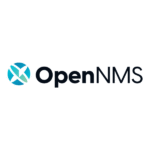LanTopoLog — When You Want to See the Real Network, Not Just Guess It
For small and mid-size networks, keeping track of who’s connected where isn’t just a matter of documentation — it’s survival. Especially when something breaks. LanTopoLog is a utility that helps map out Layer 2 topology in a direct, practical way: polling switches, walking MAC tables, and drawing a live picture of the actual structure behind the cables.
No cloud, no agents, no integration circus. Just a desktop app that does one thing: shows how devices are wired and which ports they use.
It doesn’t guess. It reads the hardware.
What It Does That’s Actually Useful
| Feature | Practical Benefit |
| Automatic Network Topology Mapping | Builds a visual map by querying switches — no manual drawing required. |
| SNMP Support | Uses SNMP to collect info from managed switches — works across vendors. |
| MAC-to-Port Resolution | Tells exactly which port a MAC address is connected to. |
| Switch Inventory View | Shows all switches, their IPs, names, and number of active ports. |
| Port Status and Link Info | Monitors port state — up/down, speed, duplex — in real time. |
| Event Logging and Alerts | Flags when a port changes status or a new device appears. |
| Exportable Reports | Outputs maps and tables in CSV or image format for documentation. |
| No Network Traffic Impact | Passive polling only — doesn’t generate test traffic or scans. |
Where It Makes Sense
LanTopoLog fits best in networks where:
– Topology isn’t well documented, and tracing cables manually is no longer an option.
– Switches are managed, but visibility is low — especially on older or mixed hardware.
– Troubleshooting needs to be fast, and “who’s on this port?” isn’t always obvious.
– VLANs are used, but Layer 2 structure still needs clarity.
It’s especially helpful in schools, office networks, warehouses, and labs — places where devices move, users swap cables, and no one updates the spreadsheet.
Setup and Use — Straightforward, Local, Functional
- Install the Application
LanTopoLog is a Windows application. No database setup, no third-party services — just run the installer and launch it.2. Enable SNMP on Switches
As with any network discovery, SNMP must be active. Set community strings, confirm access, and test from the same subnet if possible.3. Scan the Network
Input IP ranges or a list of known switch IPs. LanTopoLog will query them for topology data.4. Review the Map
The tool builds a graphical view of the topology: switches, ports, and connected MACs. Click to inspect interfaces, check status, or trace devices.5. Generate Reports (Optional)
Export to Excel, PNG, or PDF if documentation or audit output is needed.6. Monitor and Re-Poll
Use the built-in refresh cycle to keep views up to date. Events like port flaps or MAC moves will be logged automatically.
Final Notes
LanTopoLog doesn’t try to be a NOC dashboard. It doesn’t graph bandwidth, monitor uptime, or aggregate logs. What it does is map physical connections clearly — so that when someone asks “where is this device connected?”, there’s an actual answer.
It’s a single-purpose tool for people who deal with real switches, real ports, and real cables — and need to see what the network actually looks like, not what someone wrote down three years ago.






